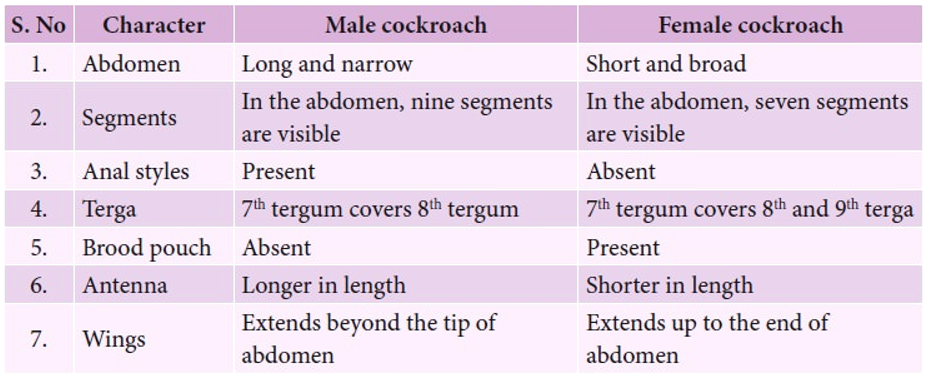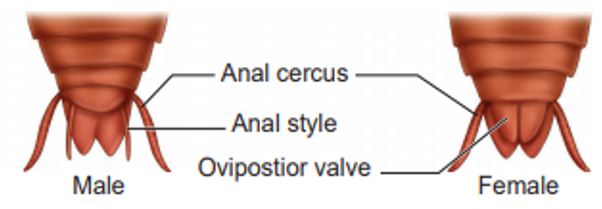Digestive System
- The digestive system is complete with a mouth and an anus.
- The alimentary canal present in the body cavity is divided into three regions: foregut, midgut and hindgut.
Foregut– Pharynx, Oesophagus, Crop and Gizzard
- The mouth opens into a short tubular pharynx, leading to a narrow tubular passage called oesophagus.
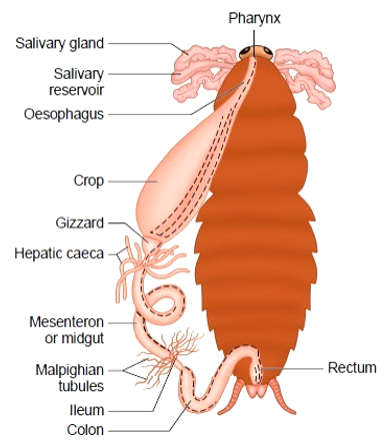
- This in turn opens into a sac like structure called crop used for storing of food.
- The crop is followed by gizzard or proventriculus.
- It has an outer layer of thick circular muscles and thick inner cuticle forming six highly chitinous plate called teeth.
- Gizzard helps in grinding the food particles.
- The entire foregut is lined by cuticle.
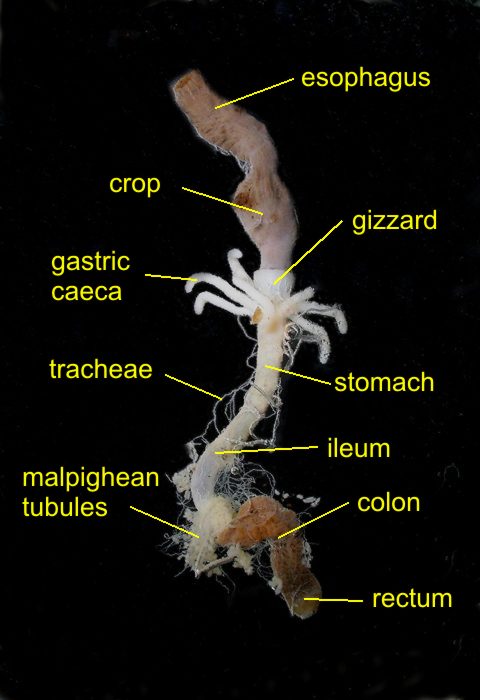
Midgut – Hepatic caeca
- A ring of 6-8 blind tubules called hepatic or gastric caeca is present at the junction of foregut and midgut, which secrete digestive juice.
Hindgut – Ileum, Colon and Rectum.
- At the junction of midgut and hindgut is present another ring of 100-150 yellow coloured thin filamentous Malpighiantubules.
- They help in removal of excretory products from haemolymph.
- The hindgut is broader than midgut and is differentiated into ileum, colon and rectum.
- The rectum opens out through anus.
Circulatory system
- Cockroaches have open circulatory system.
- Blood vessels are poorly developed and the body fluid (haemolymph)is present in the body cavity called haemocoel.
- The haemolymph consists of colourless plasma and haemocytes.
- All the inner visceral organs located in the body cavity (haemocoel) are bathed in blood (haemolymph).
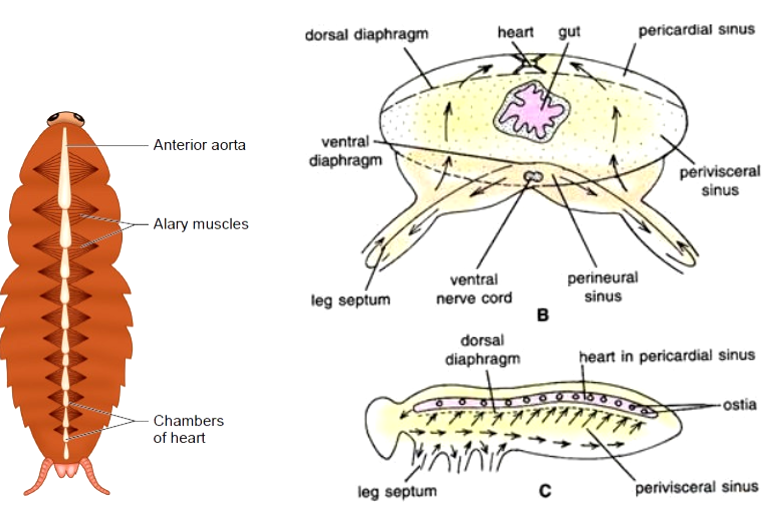
- The heart is in the form of an elongated muscular tube lying along mid dorsal line of thorax and abdomen. It is differentiated into funnel shaped chambers with ostia on either side.
- Blood from sinuses enter heart through ostia and is pumped anteriorly to sinuses again.
Respiratory System
- The respiratory system is composed of a system of tubes called trachea and its branches called tracheoles.
- The network of trachea opens through 10 pairs of small holes called spiracles present on the lateral side of the body.
- Tracheoles carry oxygen from the air to all the parts.
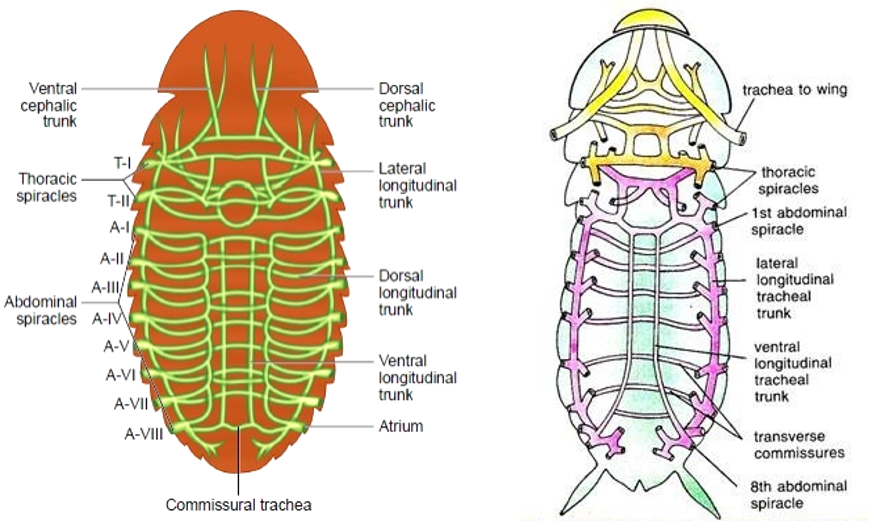
- The body fluid or hemolymph is a static medium. It does not contain any respiratory pigments.
- All tissues and organs are directly connected with the body fluid.
- Exchange of gases takes place at the tracheoles by diffusion.
Excretory System
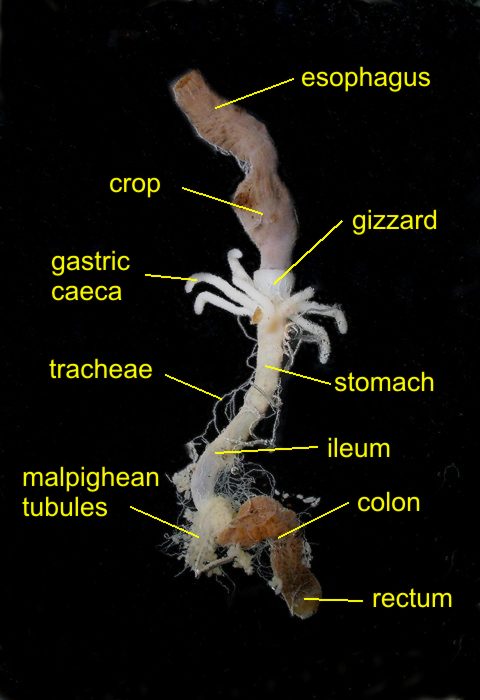
- Excretion is carried out by Malpighian tubules which are found at the junction between midgut and hindgut.
- The inner lining of these tubules contains glandular cells and ciliated cells.
- These cells absorb nitrogenous waste products and convert them into uric acid.
- Therefore, this insect is called uricotelic.
- The fat bodies, nephrocytes and urecose glands also help in excretion.
Nervous System
- The nervous system of cockroach is spread through the whole body.
- A very little part of the nervous system is present in the head. The remaining part is found in the ventral side of the body. Hence, it can survive for nearly one week even after its head is cut off.
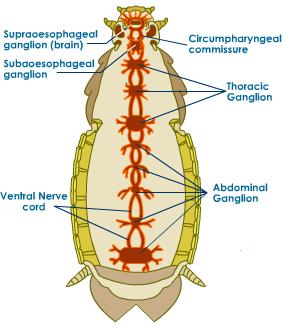
- The nervous system is composed of a series of fused, segmentally arranged ganglia joined by paired longitudinal connectives on the ventral side.
- In the head region, the brain is represented by supra-oesophagealganglion which supplies nerves to antennae and compound eyes.
- Three ganglia lie in the thorax region.
- Six ganglia are found in the abdomen.
Sense organs
- The sense organs present in cockroach, are antennae, eyes, maxillary palps, labial palps, anal cerci, etc.
- Compound eye
- It is present on the dorsal surface of the head.
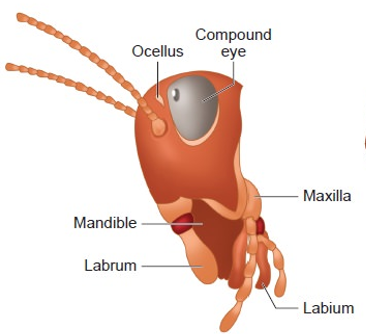
-
- Each eye consists of about 2000 hexagonal ommatidia.
- Each ommatidium produces separate images of the object.
- This kind of vision is known as mosaic vision.
- This vision is very sensitive and has low resolution.
- It is commonly used during night (hence called nocturnal vision).
Sexual Dimorphism
